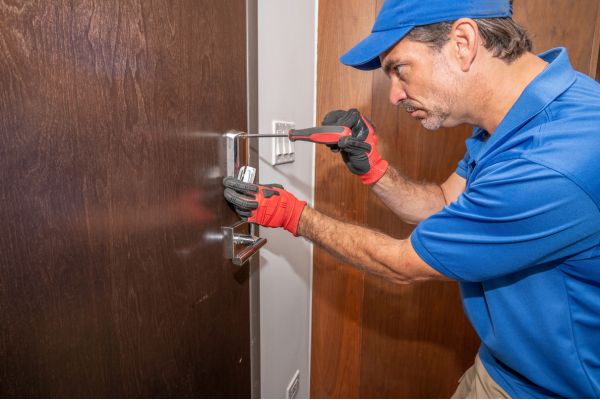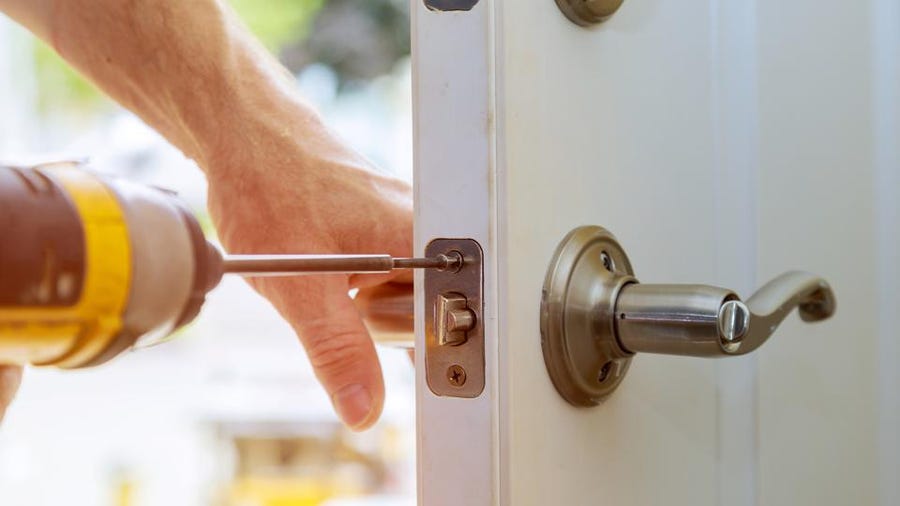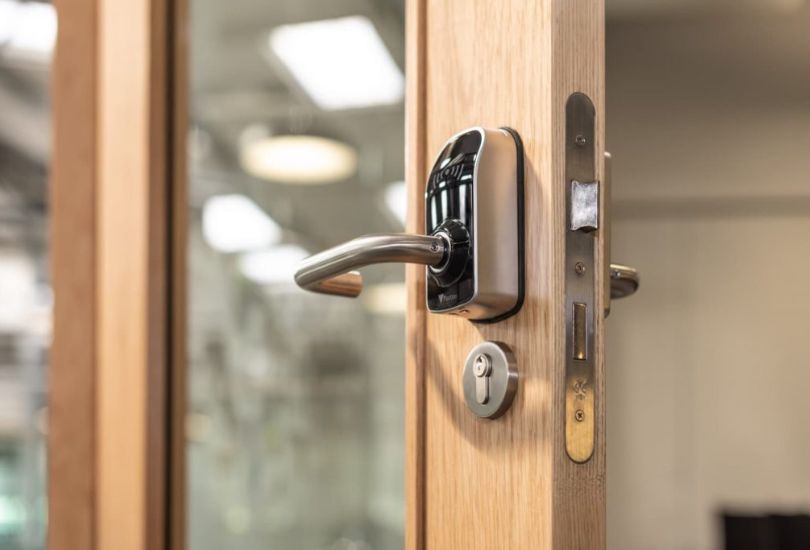In recent years, the traditional key and lock mechanism has seen a transformative evolution. As technology has seeped into nearly every aspect of our lives, our approach to home security has not been left behind. Enter the world of keyless entry systems, a modern solution that promises enhanced security and unparalleled convenience.
Gone are the days of clumsy handling for keys in the dark or worrying about losing them during a vacation. The modern homeowner seeks simplified access without the limitations of physical keys. With keyless entry, doors open with the touch of a button, a unique code, or even a fingerprint. These systems, initially popular in ultra-secure facilities and luxury places, are now becoming common in residences across the globe.
The shift to keyless entry isn’t merely embracing modernity; it’s a response to the increasing demand for enhanced security and flexibility in our fast-paced lives. In this discussion, we’ll examine the advantages, varieties, and key considerations when transitioning to a keyless future.
Understanding Keyless Entry Systems

Keyless entry systems are electronic lock mechanisms that eliminate the need for traditional metal keys. Instead of using a conventional key to engage or disengage the lock, users rely on digital methods such as codes, biometrics, or electronic signals. Let’s break down the basics:
How They Work:
At the core of keyless systems is an electronic mechanism controlled by a microprocessor. When the correct signal or input is received – be it a code, fingerprint, or wireless signal – the processor activates the lock to open or close.
Power Source:
Most keyless entry systems operate on battery power, though some may be wired into a home’s electrical system. Battery-operated systems often come with low-power indicators to alert users when a battery change is necessary.
Security Protocols:
To prevent unauthorized access, these systems employ advanced encryption for the signals and data they use. This encryption ensures that even if someone tries to intercept the signal or mimic the input, the door remains securely locked.
Backup Systems:
Recognizing that technology isn’t perfect, many keyless entry solutions come with backup methods to gain access. This might be a traditional key, a backup power source, or an different entry code.
Homeowners can use these systems to remotely control their locks, receive alerts for access attempts, and connect their locks with other smart devices in their home.
In essence, keyless entry systems combine advanced technology and security to provide a smooth and secure entry experience.
The Rise of Keyless Entry

As technology continues to reshape our lifestyles, it’s no surprise that even something as fundamental as home access is getting a modern upgrade. Let’s explore the versatile benefits of adopting keyless entry systems:
1) Enhanced Security Measures:
- No Key Copying: Without physical keys, there’s no risk of someone making unauthorized copies.
- Changeable Codes: For systems that use entry codes, it’s easy to change the code regularly or after giving temporary access, ensuring long-term security.
- Encryption: Advanced encryption methods make it challenging for potential intruders to hack or bypass the system.
- Immediate Locking: Many systems auto-lock after entry, guaranteeing your home remains secure even if you forget to lock up.
2) Convenience and Ease of Access:
- Quick Entry: No more rummaging in bags or pockets for keys. Access becomes as simple as punching in a code or using a fingerprint.
- Hands-Free Options: Some systems allow for proximity-based access, unlocking when a paired device is nearby.
- One-Time Codes: Grant temporary access with single-use codes, perfect for service providers or guests.
3) Elimination of Lost Key Issues:
Say goodbye to the panic and inconvenience of misplaced keys. Even if you forget a code, it’s often retrievable or resettable through secure methods.
4) Multi-user Access Control:
- Unique Codes: Assign unique codes to family members or frequent visitors, allowing you to monitor who accesses your home and when.
- Limit Access: Set time windows for when certain codes are valid, great for babysitters or cleaners.
- Audit Trails: Some systems maintain logs, showing when the door was accessed and by which code.
5) Integration with Smart Home Ecosystems:
- Unified Control: Integrate the lock with other smart home devices, centralizing control via a single app or system.
- Scenario Triggers: Set up situations like having your lights turn on when the door unlocks in the evening.
- Remote Monitoring: Check the status of your lock from anywhere in the world, and even lock or unlock remotely if needed.
In sum, keyless entry systems offer a balance of heightened security and exceptional ease. They cater to the dynamic needs of modern households, providing both peace of mind and ease of use in a single package.
Common Types of Keyless Entry Systems
As keyless entry systems have grown in popularity, various types have emerged, each with its unique set of features and benefits. Here’s a look at some of the most common systems that homeowners might encounter:
Keypad-based Systems:

One of the earliest forms of keyless entry, these systems rely on a numeric keypad for access. Homeowners set a unique PIN or code, which when entered, grants access. The simplicity of keypad systems makes them a popular choice. They’re especially useful for instances where you might need to share the code with visitors or service providers. For added security, many modern keypads come with smudge-resistant technology and the ability to set temporary access codes.
Fingerprint Biometrics:

The epitome of personalized security, fingerprint biometric systems use the unique patterns of one’s fingerprint to grant access. Since every individual has distinct fingerprints, this method offers a high level of security. Advanced scanners ensure quick and accurate readings, and they often have the capacity to store multiple fingerprints, allowing access for all family members.
Smartphone and Bluetooth Integrations:

As smartphones become an essential part of our lives, it’s no surprise they’re being used for home access. These systems often work through Bluetooth, detecting a paired smartphone within closeness and unlocking the door. Alternatively, dedicated apps can allow homeowners to unlock their doors with a simple tap. The added benefit? Remote access and notifications directly on the phone, offering real-time insights into home access.
RFID and Smart Card Access:

Commonly found in hotels and modern offices, RFID (Radio Frequency Identification) systems use a card or fob included with a chip. When this chip comes close to the reader, the door unlocks. For homeowners, this can translate into a small card or fob on a keychain, offering a compact and easy entry method.
Each type of keyless system has its merits, and the best fit often depends on individual choices, household needs, and the desired level of security. With the array of options available, homeowners can tailor their choice to best suit their lifestyle.
Considerations Before Making the Switch
Keyless entry systems undoubtedly offer a modern twist on home security, but before diving in, it’s essential to ponder a few critical aspects. Firstly, think about the power source. Is it battery-operated, and if so, how often will you need to replace or recharge those batteries? A consistent power source is crucial to maintain continuous security. Then there’s the question of backup access. No system is immune to rare issues, so it’s vital to have an alternative way to enter your home if the technology falters.
Compatibility is another factor. If you’re a tech fan with a home full of smart devices, you’ll want to ensure your new keyless system can blend smoothly. Cost, too, can’t be missed. While investing in security is always a wise decision, it’s essential to find a system that fits within your budget without compromising necessary features.
Conclusion:
The move towards keyless entry systems is more than just a trend—it means a shift in the way we approach home security and ease. By combining advanced technology with easy-to-use interfaces, these systems promise a future where access control is both secure and simplified.
For homeowners, the transition to keyless entry is an opportunity to modernize their homes while enjoying peace of mind. While some considerations remain, the overall advantages of improved security, convenience, and integration strongly support adopting this home access evolution. As we gaze ahead, it’s evident that the future of home security involves more than just keeping threats out; it’s also about welcoming innovation.











